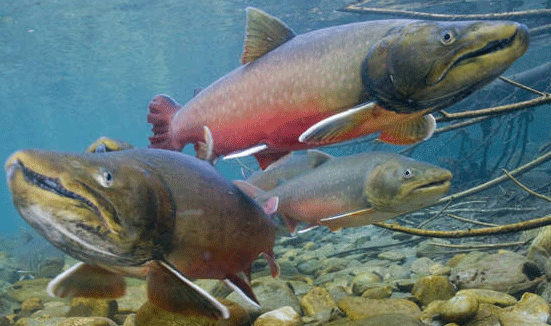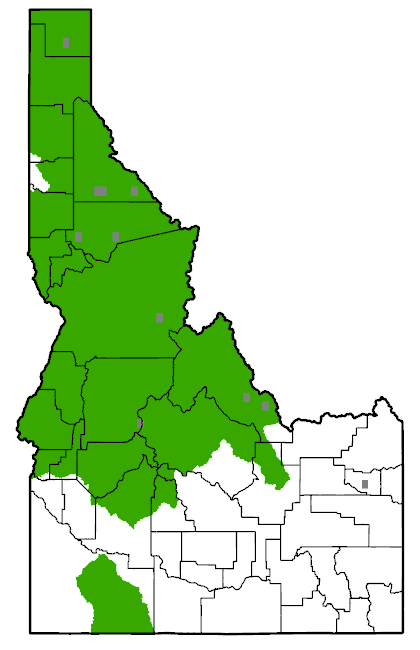ESA Status: Threatened – Designated Critical Habitat
Bull trout (Salvelinus confluentus) are a native fish found throughout Idaho. Compared to its other Salmonidae family members, bull trout are highly dependent on consistent cold-water temperatures and are rarely found in water warmer than around 60 degrees Fahrenheit. Bull trout also require stable banks with complex habitat and clean, connected waterways. Due to the sensitivity and decreasing population numbers and habitat quality of numerous bull trout population segments, the U.S. Fish and Wildlife Service (USFWS) issued a final rule listing the bull trout as Threatened in the coterminous United States on the Endangered Species Act (ESA) in 1999.
Bull trout Critical Habitat was first established in 2005 and the final rule was revised in 2010. Of the six bull trout recovery units (RU) in the coterminous U.S., the following are in Idaho: Upper Snake, Mid-Columbia, and Columbia Headwaters. The RUs contain 32 critical habitat units (CHU) of which 11 are located in Idaho.
Under former Governor Phil Batt, the State developed a recovery plan for bull trout in Idaho in 1996. The USFWS released a Final Recovery Plan for the coterminous bull trout population in 2018. The Plan identified habitat destruction and modification through land and water management activities, climate change, and impaired waterway passage as some of the greatest threats to bull trout. Additionally, illegal harvest and incidental take of migratory adult bull trout as well as the invasion of nonnative fish like brown and brook trout remain concerning. In 2018 a Five-Year Status Review of the bull trout coterminous population was completed. The U.S. Fish and Wildlife Service evaluated the best available information about the bull trout’s biology, habitat, and threats to inform the most recent Five- Year Status Review completed in September of 2024.
Staff Contact
More Information:
Species Profile for Bull Trout – U.S. Fish & Wildlife Service

Photo Credit: Joel Santore (National Geographic) and Wade Fredenberg (USFWS) via USFWS Mountain-Prairie

Map Credit: Idaho Department of Fish and Game
 Official Government Website
Official Government Website